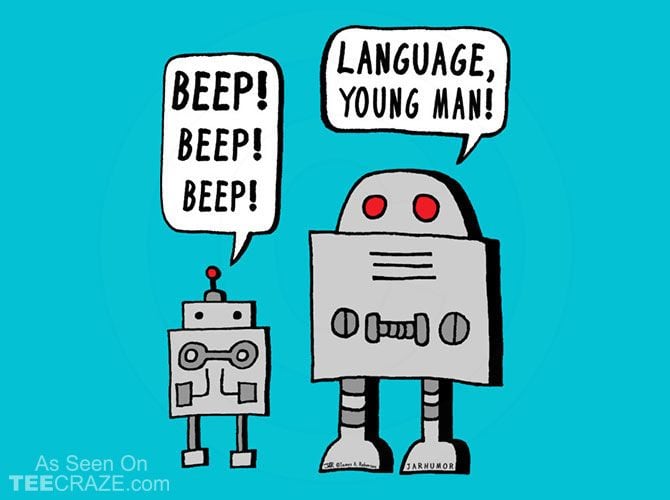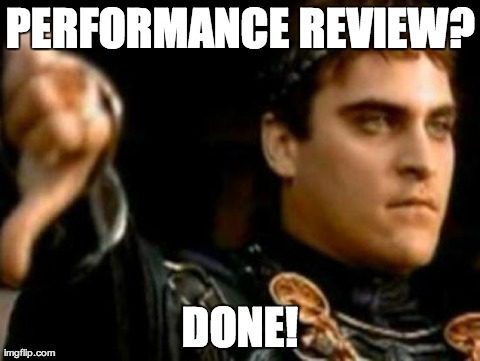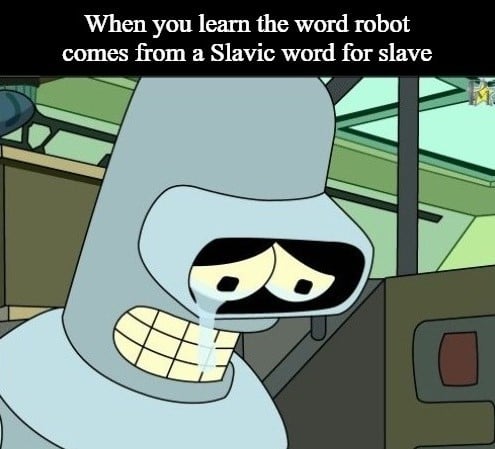Bei all dem Hype um ChatGPT und seinen nicht so erfolgreichen Konkurrenten Bard stellen sich viele Fragen darüber, wie KI dazu beitragen kann, unsere aktuelle Arbeitsbelastung zu rationalisieren.
Wenn es darum geht, GPT für HR und Recruiting zu nutzen, gibt es verschiedene Möglichkeiten, diese neue Technologie einzusetzen, um Ihre Produktivität und Effizienz drastisch zu verbessern.
Was soll die Aufregung?
Der Hype um ChatGPT ist nicht unbegründet. Die zugrunde liegende GPT-3-Technologie kann in verschiedene virtuelle Tools integriert werden, um deren Fähigkeiten zu verbessern. Werfen wir einen kurzen Blick auf einige der Möglichkeiten, wie Sie GPT für das Recruiting und die Personalabteilung nutzen können.
- Beschleunigung des Einstellungsverfahrens
- Rationalisierung des Onboarding
- Steigerung des Mitarbeiterengagements durch Chatbots
- Bewertung der Leistung
- Mehr Vielfalt und Integration
Wir werden diese 5 Möglichkeiten in Kürze näher erläutern. GPT-3 kann insbesondere dazu verwendet werden, den Einstellungsprozess zu beschleunigen. Es gibt Dutzende von Möglichkeiten, die zu einer insgesamt reibungsloseren Erfahrung für Personalverantwortliche und Bewerber führen.
Stellen Sie sich vor, dass eine Software Lebensläufe sichtet, starke Bewerber identifiziert und ihre Erfahrungen automatisch zusammenfasst. Stellen Sie sich vor, Sie könnten die Anzahl der Vorstellungsgespräche reduzieren, ohne den Prozess der Bewerberprüfung zu beeinträchtigen. Und was wäre, wenn es ein Tool gäbe, das Ihnen hilft, Stellenanzeigen zu erstellen, die Top-Bewerber anziehen? Sie können GPT-3 auf all diese Arten für die Personalbeschaffung nutzen. KI-gestützte HR-Tools können eine Vielzahl von Vorgängen automatisieren und vereinfachen und Ihnen viele Arbeitsstunden ersparen.
Inzwischen gibt es nur noch wenige Einstellungsverfahren, bei denen GPT-3 nicht helfen kann. Das ist eine gute Nachricht für überlastete Personalverantwortliche, die unter der Last der Lebensläufe ertrinken. Tatsächlich werden die KI-HR-Tools so gut, dass sie fast ein bisschen unheimlich sind.
@tldv.io Geschrieben von ChatGPT #inception #chatgpt #ai #openai #meeting #corporate
♬ Originalton - tldv.io - KI-Meeting-Recorder
HR nutzt bereits KI
Es ist erwähnenswert, dass KI im Personalwesen kein neues Konzept ist. Es gibt unzählige Tools und Software, die bereits eine Art von künstlicher Intelligenz einsetzen, um die Personalarbeit zu vereinfachen, von der Einstellung bis zum Onboarding und allem, was danach kommt.
Der Unterschied besteht darin, dass mehr Tools als je zuvor mit GPT-3 integriert werden und die Vorteile für die Personalabteilung bemerkenswerter denn je sind.
Haben Sie schon einmal von Textio gehört? Dabei handelt es sich um ein KI-gestütztes Schreibwerkzeug, das HR-Teams dabei hilft, Stellenbeschreibungen, Unternehmensrichtlinien und andere schriftliche Mitteilungen zu verbessern. Das Tool analysiert Sprachmuster und macht Vorschläge, um die Effektivität und den Inklusionsgrad der Inhalte zu verbessern.
Es gibt auch WorkFusion, eine KI-gestützte Automatisierungsplattform, die zur Automatisierung von Routineaufgaben im Personalwesen wie Dateneingabe, Gehaltsabrechnung und Verwaltung von Sozialleistungen eingesetzt werden kann.
Dies sind nur 2 Beispiele für KI-HR-Software, die bereits eingesetzt wird. Wir sagen es nur ungern, aber selbst wenn Sie KI vernachlässigen, können Sie darauf wetten, dass Ihre Konkurrenten das nicht tun. Und mit ihrer Fähigkeit, Zeit, Geld und Energie zu sparen, werden diejenigen, die KI nutzen, florieren. Sie werden die besten Bewerber mit reibungsloseren, effizienteren Rekrutierungsprozessen anziehen und an sich binden.
5 Wege, wie GPT Personalvermittler und HR-Teams unterstützen kann
1. Beschleunigen Sie den Einstellungsprozess
GPT kann so trainiert werden, dass es Lebensläufe analysiert und relevante Fähigkeiten, Erfahrungen und Ausbildungen identifiziert, die Ihren Stellenanforderungen entsprechen. Dank dieser leistungsstarken Funktion können HR-Teams GPT nutzen, um Lebensläufe automatisch zu prüfen und qualifizierte Kandidaten auf der Grundlage der Anforderungen des Unternehmens und der Rollenspezifikation zu identifizieren.
KI-Rekrutierungssoftware kann genutzt werden, um Bewerber zu finden, die am besten für die zu besetzende Stelle geeignet sind - und zwar schnell. Darüber hinaus können Sie GPT für die Personalbeschaffung nutzen, um automatisch Zusammenfassungen der Lebensläufe oder Bewerbungen der einzelnen Bewerber zu erstellen. Dies macht das Leben eines Personalverantwortlichen einfacher, da er nicht mehr den gesamten Lebenslauf jedes einzelnen Bewerbers durchsehen muss. Und das Beste daran? Sie können GPT darauf trainieren, nach bestimmten Elementen zu suchen, so dass Sie die Lebensläufe nach Relevanz auflisten können.
Sie können ChatGPT sogar nutzen, um Stellenbeschreibungen zu verfassen, die genau ausdrücken, was Sie brauchen und was die Anforderungen für eine solche Rolle wären. Darüber hinaus können Sie sogar KI in der Personalbeschaffung einsetzen, um Bewerbern E-Mails zu schicken, um sie über den Prozess auf dem Laufenden zu halten.
KI-Rekrutierungssoftware kann sogar dazu verwendet werden, Talente von anderen Unternehmen abzuwerben. Sie hilft Ihnen dabei, Ihren Aktionsradius einzugrenzen und genau die Art von Fähigkeiten zu finden, die Ihr Unternehmen benötigt.
KI-Tools zur Beschleunigung des Rekrutierungsprozesses
Entelo: Entelo ist eine KI-gestützte Rekrutierungsplattform, die Personalverantwortlichen hilft, Top-Kandidaten zu finden und anzusprechen. Die KI der Plattform analysiert Bewerberdaten und gibt personalisierte Empfehlungen für die Ansprache und das Engagement.
HireVue: Die KI-Technologie von HireVue analysiert die Körpersprache von Bewerbern während des Gesprächs und liefert so wichtige Erkenntnisse, die den HR-Teams helfen, fundierte Einstellungsentscheidungen zu treffen.
tl;dv: tl;dv ist ein KI-Besprechungsassistent, der Ihnen helfen soll, Mitarbeiter schnell einzustellen, und der Traum eines jeden Recruiters. Es beschleunigt den Einstellungsprozess, indem es Ihnen ermöglicht, Ihre Vorstellungsgespräche aufzuzeichnen und Highlights zu erstellen, so dass die Beteiligten die Möglichkeit haben, Kandidaten schneller zu prüfen, indem sie zu den besten Teilen des Gesprächs springen. Dies geschieht ganz einfach per Hyperlink und erfordert keinerlei technische Kenntnisse.
Darüber hinaus beschleunigt tl;dv mit GPT-3 die Rekrutierung, indem es nach dem Gespräch automatisch eine Zusammenfassung der wichtigsten Punkte erstellt. So erhalten Sie einen Überblick, den Sie bei der Kandidatensuche einfach als Rekapitulation verwenden können.
Indem Sie den Einstellungsprozess beschleunigen, haben Sie eine viel größere Chance, das "erste Angebot" des Bewerbers zu sein, das dieser in den meisten Fällen auch annehmen wird. Durch die Möglichkeit, das Video aufzuzeichnen, zu transkribieren und Clips daraus zu erstellen, wird der Bedarf an Folgegesprächen drastisch reduziert.
Vorbei sind die Zeiten, in denen jeder Beteiligte im Unternehmen einen Bewerber in einem Vorstellungsgespräch kennenlernen muss. Jetzt können sie einfach prüfen, wie der Bewerber bei früheren Vorstellungsgesprächen aufgetreten ist, und seine Antworten, seine Einstellung und seine Körpersprache beobachten, als ob sie selbst dabei gewesen wären. So können Sie Voreingenommenheit reduzieren, indem Sie mehr Teammitglieder mit minimalem Zeitaufwand zu Wort kommen lassen.
tl;dv ist nicht nur ein fantastisches digitales Interview-Tool für Personalverantwortliche, sondern auch für die Bewerber. Sie können die Aufzeichnung auch den Bewerbern zur Verfügung stellen, so dass sie jederzeit darauf zurückgreifen können, um sicherzustellen, dass sie nichts Wichtiges vergessen haben. Dies ist auch eine großartige Möglichkeit, einem Bewerber Feedback zu geben, indem man die integrierte Notizfunktion von tl;dvnutzt.
2. Onboarding der Mitarbeiter
Wenn der Einsatz von GPT zur Beschleunigung der Rekrutierung nicht ausreicht, wie wäre es dann mit der Beschleunigung und Verbesserung des Onboarding-Prozesses? GPT kann personalisierte Onboarding-Pläne für neue Mitarbeiter entwickeln, die den gesamten Prozess rationalisieren und effizienter gestalten.
Durch die Analyse des Lebenslaufs des neuen Mitarbeiters, der Stellenanforderungen und der Unternehmensrichtlinien kann GPT einen maßgeschneiderten Plan erstellen, in dem die spezifischen Aufgaben und Schulungen aufgeführt sind, die der neue Mitarbeiter in den ersten Wochen seiner Tätigkeit absolvieren muss. Dieser neue Ansatz für das Onboarding ist von unschätzbarem Wert. Er macht nicht nur Ihr Leben einfacher, sondern auch das des erfolgreichen Bewerbers.
Sie können GPT sogar nutzen, um interaktive Onboarding-Materialien wie Videos, Quizze und Simulationen zu erstellen, die neue Mitarbeiter auf interaktive und personalisierte Weise ansprechen und weiterbilden können. Darüber hinaus können diese Materialien an die Rolle, den Erfahrungsstand und den Lernstil des neuen Mitarbeiters angepasst werden! So wird sichergestellt, dass sie die Informationen und Schulungen erhalten, die sie benötigen, um in ihrer neuen Rolle erfolgreich zu sein.
Wenn Sie Ihren Einführungsprozess auf jeden einzelnen Mitarbeiter abstimmen, wird er für alle Beteiligten wesentlich effizienter. Außerdem kann diese persönlichere und ansprechendere Erfahrung zu einer höheren Mitarbeiterzufriedenheit und -bindung führen. Letztendlich wird sich dies auf alle Bereiche Ihres Unternehmens auswirken.
AI-Tools für das Onboarding von Mitarbeitern
IBM Watson Talent: IBM Watson Talent ist eine KI-gestützte Plattform für HR-Teams und hilft bei der Optimierung von Rekrutierung, Onboarding und Mitarbeiterbindung. Die KI analysiert HR-Daten, um Erkenntnisse zu gewinnen, die das Mitarbeitererlebnis verbessern können.
3. Mitarbeiterengagement und Chatbots
Während ChatGPT selbst ein Chatbot ist, kann die zugrundeliegende Technologie von GPT-3 von jedem Unternehmen genutzt werden, um seinen eigenen personalisierten Chatbot zu erstellen. Sie können ihn auch als virtuellen Assistenten betrachten. Wenn er mit den Anforderungen Ihres Unternehmens programmiert wird, kann er Wege finden, um mit den Mitarbeitern in Kontakt zu treten und ihre Erfahrungen zu verbessern. Es gibt eigentlich nicht viel, was GPT nicht kann. Er kann sogar Witze erzählen, auch wenn diese zugegebenermaßen ziemlich schrecklich sind...
@tldv.io ChatGPT kann ein bisschen gemein sein #chatgpt #ai #openai #tech #startup #corporate #product #bisops #sales
♬ Originalton - tldv.io - KI-Meeting-Recorder
Durch individuelle Empfehlungen zu Schulungen, Mentoring und anderen Entwicklungsmöglichkeiten kann GPT Ihre Belegschaft stärken und die Zufriedenheit am Arbeitsplatz erhöhen, sei es im Büro oder unter remote.
Das Beste an der Verwendung von GPT für die Mitarbeiterbeteiligung ist, dass es darauf trainiert werden kann, natürlichsprachliche Anfragen zu verstehen und mit relevanten Informationen in einer dialogorientierten Art und Weise zu antworten. Im Grunde genommen wird es nicht wie ein Roboter klingen.

AI-Tools für Mitarbeiterengagement
PredictiveHire: Ein KI-Chatbot, der während des Einstellungsprozesses mit dem Bewerber in Kontakt tritt, mag wie etwas aus der Zukunft klingen, aber diese leistungsstarke Funktion finden Sie bei PredictiveHire. Es kann auch personalisierte Empfehlungen für Schulungs- und Entwicklungsmöglichkeiten geben .
Text IQ: Eine weitere KI-gestützte Plattform für die Mitarbeiterkommunikation und die Identifizierung potenzieller Compliance-Risiken. Text IQ nutzt die Verarbeitung natürlicher Sprache und maschinelles Lernen, um Muster und Anomalien in der Mitarbeiterkommunikation zu erkennen und dann Lösungen anzubieten.
4. Leistungsbewertung
Nutzen Sie GPT, um die Leistungsdaten Ihrer Mitarbeiter zu analysieren und Muster zu erkennen, die HR-Teams dabei helfen können, fundierte Entscheidungen über Beförderungen, Boni und andere Belohnungen zu treffen. Das klingt nach einer super einfachen Lösung. Es ist eine weitere Möglichkeit, mit der GPT in der Personalabteilung eine Menge Zeit und Ressourcen sparen kann.

AI-Tools für die Leistungsbewertung
ADP Datacloud: Diese KI-gestützte Analyseplattform kann von HR-Teams genutzt werden, um Mitarbeiterleistungsdaten zu analysieren und Muster zu erkennen. Sie bietet Einblicke in Faktoren, die sich auf die Leistung der Mitarbeiter auswirken können, z. B. Schulungs- und Entwicklungsmöglichkeiten, Work-Life-Balance und Arbeitszufriedenheit.
Keka: Ähnlich wie ADP Datacloud kann Keka für das Leistungsmanagement und die Leistungsbewertung verwendet werden. Es analysiert auch Mitarbeiterdaten, um Einblicke in Bereiche zu geben, in denen Mitarbeiter zusätzliche Schulungen oder Unterstützung benötigen.
5. Vielfalt und Inklusion
Ja, GPT kann sogar dazu verwendet werden, Daten darüber zu liefern, wie sich das Unternehmen im Hinblick auf Vielfalt und Integration in der Belegschaft verbessern kann. GPT kann zum Beispiel geschult werden, um Muster in den Einstellungspraktiken oder den Mitarbeiterbindungsraten zu erkennen, die auf Voreingenommenheit oder Diskriminierung hindeuten.
Im Grunde genommen kann GPT jeden Aspekt des Personalwesens, der eine Datenanalyse erfordert, schnell für Sie vereinfachen. Das ist der Hauptgrund, warum GPT in der Personalabteilung und im Recruiting einen so großen Einfluss auf die Entwicklung hat.
AI-Tools für Diversität und Integration
SymbaSync: SymbaSync ist eine KI-gestützte Plattform für den Talentabgleich und mehr als nur ein einprägsamer Name. Sie kann zur Förderung von Vielfalt und Inklusion bei der Einstellung eingesetzt werden, indem sie Bewerberdaten analysiert und personalisierte Empfehlungen für Kandidaten gibt, die gut in das Unternehmen passen könnten.
Pflaume: Nicht zu verwechseln mit der köstlichen Frucht, ist Plum eine KI-gesteuerte Plattform, die Ihnen hilft, Vorurteile abzubauen und die Vielfalt im Einstellungsprozess zu verbessern.
Die Zukunft der Humanressourcen
Bei so vielen verrückten Fortschritten im Bereich der künstlichen Intelligenz ist es leicht, sich zu der Annahme hinreißen zu lassen, dass sie alles übernehmen wird. Auf absehbare Zeit ist das aber nicht der Fall.
Ein GPT-Tool ist nutzlos, wenn ihm niemand Fragen stellt oder es mit Daten programmiert. Es braucht immer noch Menschen, um die KI zu bedienen. Sie könnte zwar eine Reihe von Positionen grundlegend verändern, aber sie wird den Bedarf an Menschen in der Personalabteilung wohl kaum aus der Welt schaffen. Dann müsste man sie in KI-Ressourcen umbenennen.
Ähnlich verhält es sich mit den GPT-Besprechungstools, die Besprechungen zwischen Menschen erleichtern. Die Menschen müssen sich immer noch treffen, damit ein KI-Besprechungsassistent wie tl;dv Sinn macht.
Wird KI die Personalvermittler ersetzen?
KI hat definitiv das Potenzial, einige der mühsameren und zeitaufwändigeren Aspekte der Personalbeschaffung zu automatisieren. In der Tat tut sie das bereits. Es ist jedoch unwahrscheinlich, dass sie Personalvermittler vollständig ersetzen kann. Es gibt viele Aspekte der Personalbeschaffung, die menschliches Urteilsvermögen und Entscheidungen erfordern, wie z. B. der Aufbau von Beziehungen zu Kandidaten, die Bewertung von Soft Skills und die Beurteilung der kulturellen Eignung.
Es läuft auf Folgendes hinaus: KI ist nicht in der Lage, die nuancierten und komplexen Interaktionen nachzubilden, die für eine erfolgreiche Rekrutierung oft notwendig sind. Sie kann Daten analysieren und Vorschläge unterbreiten, aber ihr Kopf steckt in der digitalen Welt fest, während die Rekrutierung ein gewisses Maß an menschlicher Interaktion erfordert.
Kein Unternehmen, das von kompetenten Menschen geführt wird, würde jemals KI allein eine Einstellungsentscheidung anvertrauen. KI ist dazu da, uns zu dienen und unser Leben einfacher zu machen. Sie wird mit Sicherheit einige Jobs überflüssig machen, aber die Personalbeschaffung wird wohl kaum dazu gehören.















